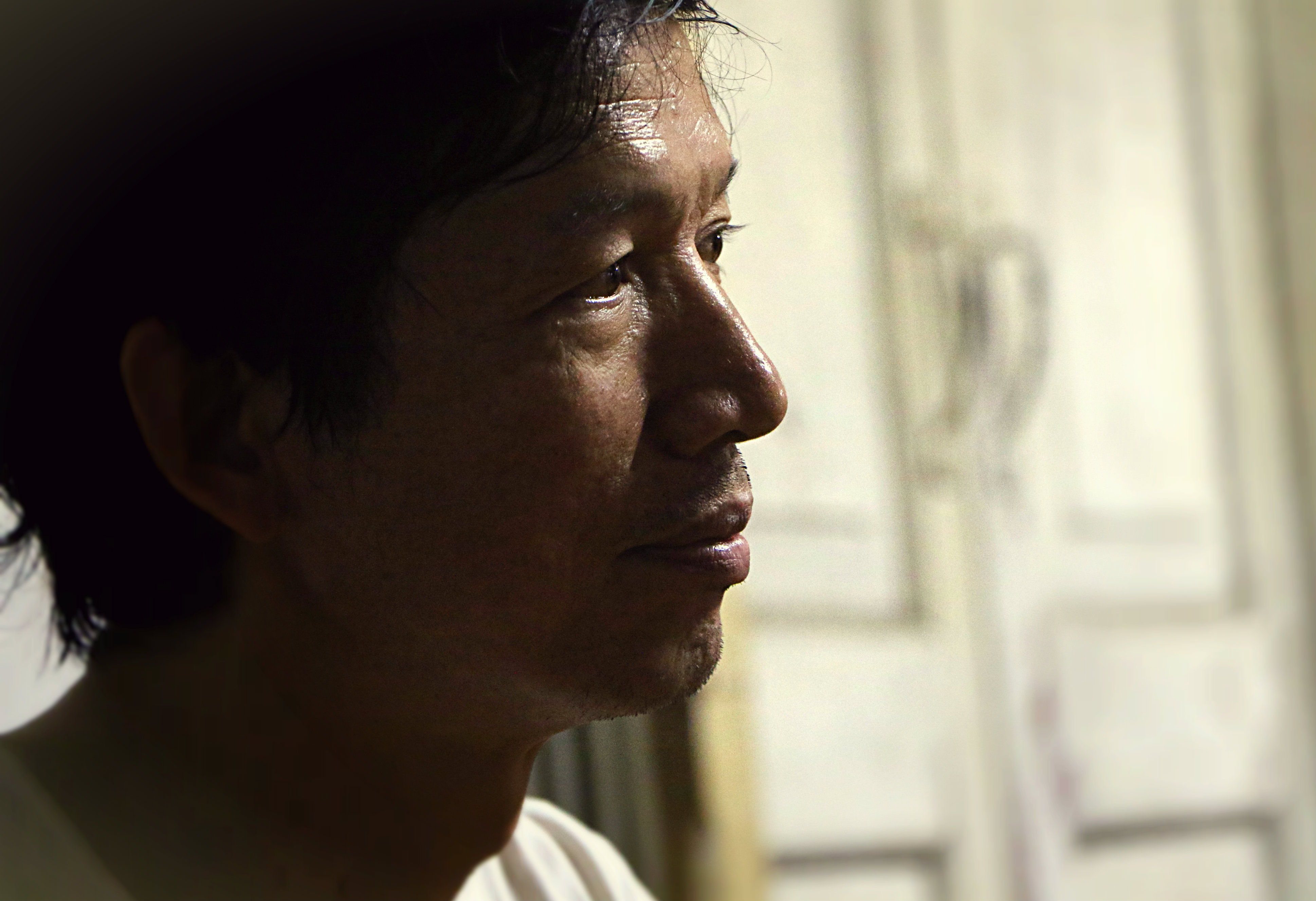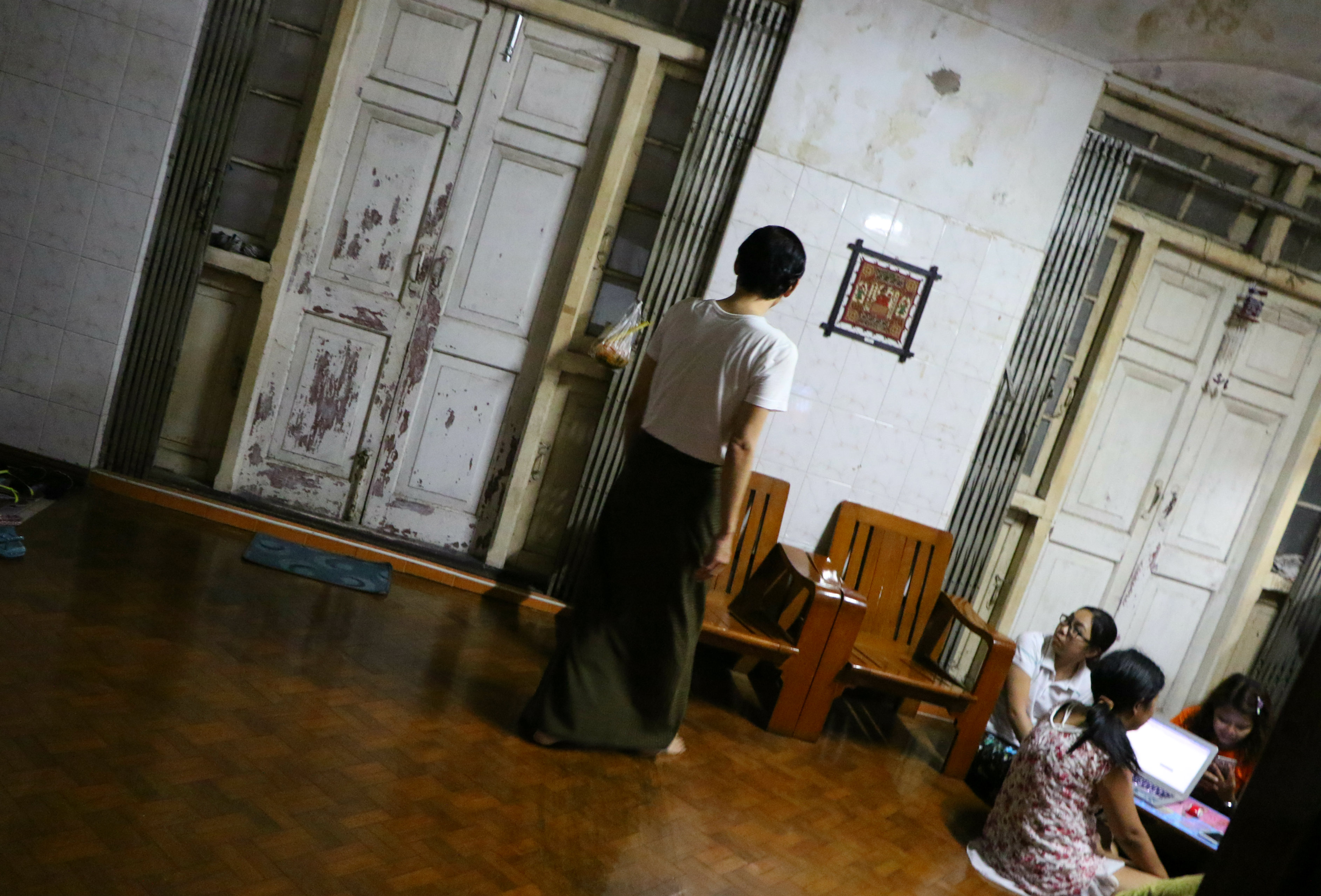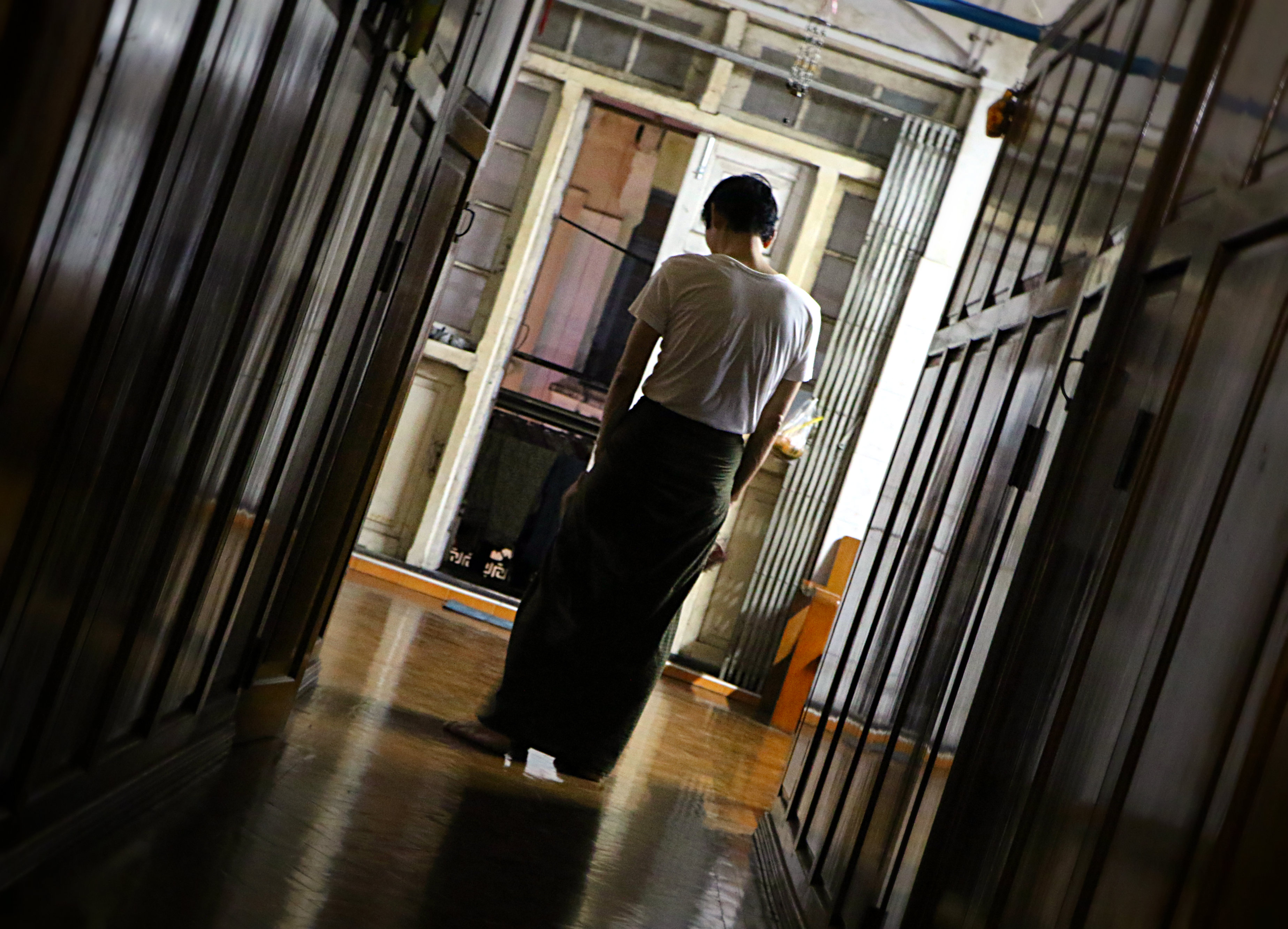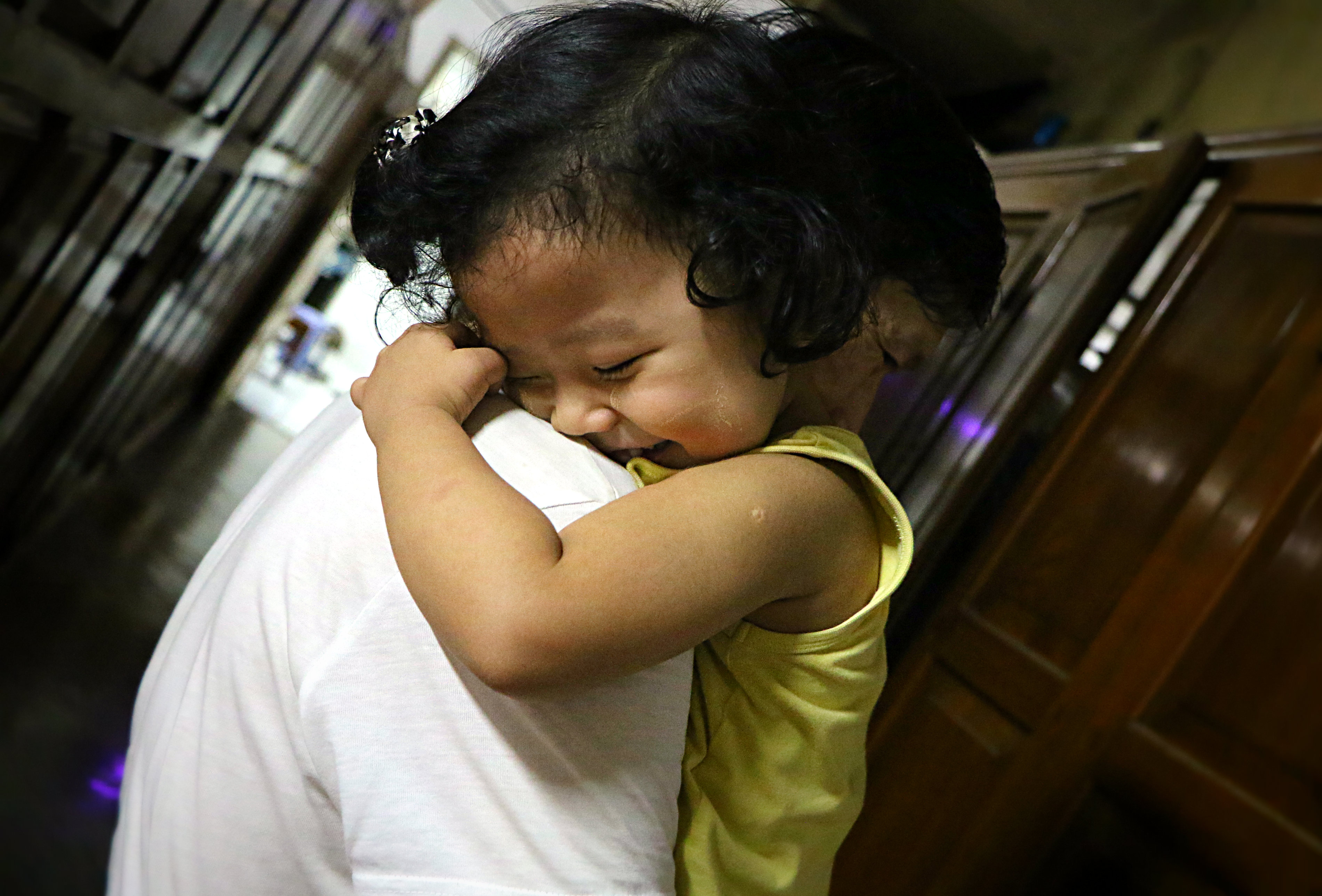
Myint Kyaw worked as a journalist in a time where there were no political news in the media, and he trained journalists outside Myanmar before it was allowed for them to organize. This week he releases a campaign against the mistreatment of journalists. “We keep pushing the limits,” he says.
A staircase with two green barred doors on first and second floor makes the entrance to an old apartment at Bogalay Zay Street in Botahtaung, Yangon. Seconds after pushing a locked door with no handle, a woman opens up and welcomes me.
The apartment looks like an old industry hall with its high ceilings and raw and rustic surfaces. On the floor a group of people in different ages are sitting and talking.
“They are journalists,” Myint Kyaw says and emerges in the background – a long, half-lit corridor with beds and rooms on both sides. His eyes are calm, and his way of moving down the corridor – elegant.

“We discuss ethics or recent cases of journalists being arrested,” Myint says, when we start talking about the organization MJN – Myanmar Journalist Network.
It was established in 2011 and has around 350 members today. They meet every month and Myint Kyaw is the general secretary of the organization.
“After several years working as a journalist, I started to understand, how journalism could move forward in Myanmar: We need training and we need to build journalistic institutions to strengthen our position,” he says.
We move down the corridor and into the kitchen to talk.
Blue jackets
Two weeks ago, there was a demonstration in Yangon organized by students. Two journalists showed up to cover the event, but the police beat them. According to Myint the journalists were not doing anything wrong. Few days later, a similar situation happened, and some journalist were beaten and detained.
“The Government says, however, that they acted in a legal way and that the journalists were unethical and that they did not obey the law,” Myint says and continues;
“Recently the police have gone directly after the journalists. Our press card is not enough, we need to do something else to make it clear for everyone that we are journalists, and to show that the police are coming directly after us”.
That is why MJN is now making blue jackets with the letters: PRESS. They are to protect journalists, when they cover demonstrations.
“We do not accept that these journalists were beaten and detained, and we will put a pressure on the Government and make them take responsibility for their actions to avoid situations like this,” Myint says.
This week MJN released a campaign against the mistreatment of journalists. Tomorrow there will also be a peaceful demonstration with a small group of journalists standing around the place, where the incident happened.

In the campaign MJN has reached out to all media in Myanmar to make them do a ‘three-days-blank-pages’ to show that Burmese journalists will not accept this kind of behavior from the Government. Already now, several media have joined the campaign.
“How many media will follow us, I do not know. But I hope that at least 40 or 50 per cent will do it,” Myint says.
Uneducated journalists
Education is very important to develop journalism in Myanmar, Myint thinks.
“The journalists need training to know, how to navigate in the system and how to access correct information, so they do not end up in trouble,” he says.
But there are no journalism schools in Myanmar. Some places offer one week or two weeks courses. Myint has been training journalists for several years.
“In the beginning we had to train journalists outside Myanmar, for example in Thailand, because the Government did not allow the training here,” he says.
Since 2011 Myint and other trainers have been able to do the journalism training in Myanmar. But there is not enough local trainers, and international trainers are expensive, Myint tells.
Recently Myint and other journalists in Myanmar founded Myanmar Journalism Institute (MJI). He currently works at the institute as the executive director. At the moment MJI has four permanent trainers, and in the whole country there are around 20 local trainers – primarily based in the big towns: Yangon and Mandalay. But they are not all full time trainers.
Tricky laws
Myint Kyaw is involved in many organizations to keep developing journalism in Myanmar. In 2012 a press council in Myanmar was established. Myint is a member, representing MJN. He also went abroad for one year in 2008 to do a fellowship program at University of California, Berkeley.
Although Myint keeps pushing the limits and fights against self-censure, he must admit that the tricky laws in the country is something that affects his journalism.
“It makes me afraid, and sometimes I stay away from writing about a specific conflict, federal issues or the military,” Myint tells.
At the moment, 12 journalists are in prison in Myanmar, and self-censure, limited access to information and tricky laws is everyday life. But the current situation can have an interesting side as well, Myint thinks.
“It is sometimes quite interesting to do journalism in a country with so many issues and struggling every day,” Myint says and laughs.


